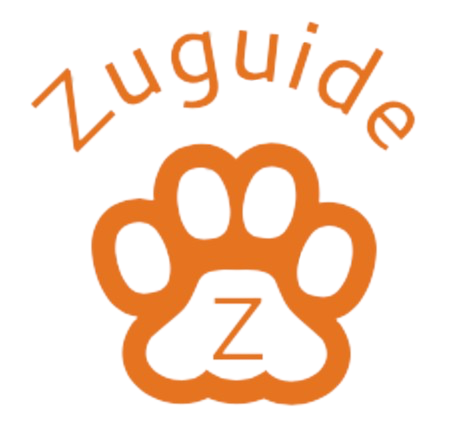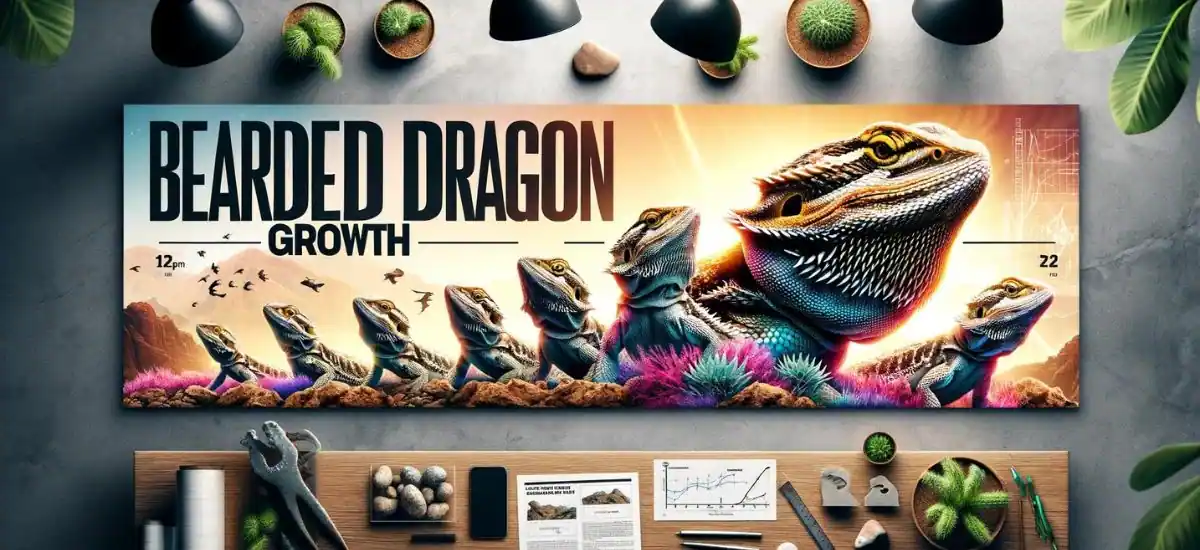Bearded dragon enthusiasts often seek a reliable bearded dragon growth chart to ensure their scaly companions are on the right track. Such a chart is pivotal, as it helps you visually track the development from a lively hatchling to a serene adult.
The chart reflects typical growth milestones, highlighting the expected length and weight at various ages. It’s important to remember, though, that growth can vary based on factors like diet, environment, and genetics.
While deviations are normal, significant discrepancies should prompt a review of their habitat and diet or a consultation with a vet. By staying informed with a growth chart, you’re not just observing; you’re actively participating in your bearded dragon’s journey to a healthy life.
Bearded Dragon Growth Stages

1. Hatchling (0-2 months): Tiny yet feisty, hatchlings are a marvel to watch. At this stage, expect rapid growth as they can double or even triple in size quickly. Proper feeding and care are critical during this formative phase.
2. Juvenile (2-8 months): This is a period of significant growth and curiosity. Juveniles explore and often exhibit changes in appetite as they grow. Monitoring their developmental milestones during this time helps ensure they are on the right track.
3. Sub-Adult (8-18 months): Growth starts to slow down, but behavioral changes are noticeable. It’s a critical period for social and environmental interactions, shaping their personality and habits.
4. Adult (18 months and beyond): Once they reach adulthood, bearded dragons’ growth stabilizes, but their care needs continue to evolve. Understanding their needs during this stage is essential for their longevity and well-being.
Factors Influencing Growth
1. Genetics: Just like humans, a bearded dragon’s genetics play a pivotal role in determining its growth potential. Understanding their lineage can provide insights into their size and health.
2. Diet: Nutrition is the cornerstone of a healthy dragon. Offering a balanced diet rich in vitamins and minerals supports optimal growth and health.
3. Environment: The right setup is vital. Temperature, lighting, and adequate space mimic their natural habitat and influence their physical development.
4. Health: Vigilance is key. Be aware of symptoms like lethargy or irregular growth, as they can indicate health issues such as metabolic bone disease.
Measuring and Tracking Growth

Keeping track of your bearded dragon’s growth isn’t just about measuring; it’s a way to ensure they are healthy and thriving under your care. Here’s how you can effectively monitor their growth and what to do if you notice any deviations.
Tools and Methods for Measuring a Bearded Dragon
To accurately measure your bearded dragon, you will need a few simple tools:
- Soft Measuring Tape: This is crucial for measuring the length of your dragon from the tip of their nose to the end of their tail. A soft tape is gentle and can easily curve around their body.
- Scale: Regular weigh-ins are important to monitor their weight. A digital kitchen scale works well for this purpose.
- Notepad or Digital Log: Keeping a record of these measurements is essential for tracking growth over time.
When measuring, always ensure your dragon is calm and relaxed. Measure their length and weight at the same time each month to maintain consistency.
How to Keep a Growth Log and Interpret the Data
A growth log should include the date, length, weight, and any notes on behavior or health. Here’s how to maintain one:
- Record Regularly: Make entries on a consistent schedule—monthly is ideal.
- Note Any Changes: Besides physical measurements, record any dietary changes, behavior changes, or health issues.
- Look for Patterns: Over time, you’ll see patterns in growth. Spurts and slow periods can be normal, but consistent logging helps you recognize when something isn’t right.
Interpreting the data involves looking at the growth curve. A healthy bearded dragon should follow a predictable growth pattern, with rapid growth in the early stages that gradually slow down as they approach maturity.
What to Do if Growth Deviations Occur
If you notice your bearded dragon isn’t growing as expected, or if there are sudden changes in their growth rate, consider the following steps:
- Review Their Environment: Check if the habitat is properly set up with the right temperatures and lighting.
- Assess Their Diet: Nutritional deficiencies can affect growth. Ensure their diet is balanced and appropriate for their stage of life.
- Consult a Veterinarian: If environmental and dietary reviews don’t resolve the issues, it’s crucial to consult with a veterinarian who specializes in reptiles. They can check for underlying health issues that might be impacting growth, such as parasites or metabolic bone disease.
By actively measuring and monitoring your bearded dragon’s growth, you create a detailed picture of their health and well-being, allowing you to react quickly to any potential problems and ensuring they lead a long, healthy life.
Growth Chart Explanation

Understanding how a bearded dragon grows from a hatchling to an adult is essential for proper care. Below is a detailed month-by-month table illustrating typical growth in length and weight. Additionally, the table highlights differences in growth rates between male and female bearded dragons, which can be useful for identifying the sex of your pet as it matures.
Month-by-Month Growth Chart
| Age (Months) | Average Length (Inches) | Average Weight (Grams) | Male vs. Female Differences |
| 1 | 3-4 | 4-6 | Similar growth rates |
| 2 | 5-6 | 10-20 | Similar growth rates |
| 3 | 6-8 | 20-30 | Males may start to grow slightly faster |
| 4 | 8-10 | 35-50 | Males may be slightly longer |
| 5 | 9-12 | 50-70 | Males typically heavier |
| 6 | 11-13 | 70-100 | Males typically longer and heavier |
| 8 | 13-16 | 100-135 | Noticeable size difference favoring males |
| 10 | 16-18 | 135-200 | Males significantly larger |
| 12 | 18-20 | 200-250 | Males larger and heavier |
| 18+ | 18-24 | 250-550 | Males remain larger; growth slows for both |
Visual Aids
Incorporating diagrams or charts can help visually represent the growth trajectory of bearded dragons. For instance, a line graph plotting age against average length and weight can clearly show how these metrics change over time. It’s also beneficial to plot male and female growth curves separately to illustrate the differences.
Comparison of Growth Rates Between Males and Females
As indicated in the table, male bearded dragons typically grow faster and become larger than females, especially after the sixth month. This difference is not just in size but also in weight, where males often end up being significantly heavier as they mature. Understanding these differences can help in better sexing your bearded dragons as they grow and ensuring that their dietary and space needs are adequately met according to their size.
Addressing Common Growth Concerns
Slow Growth: If your dragon is growing slowly, check if their diet or environment needs adjustment. Sometimes, a simple change can make a big difference.
Rapid Growth: Conversely, unusually fast growth may lead to health issues. Ensure your pet’s diet isn’t overly rich in fats and proteins.
Signs of Healthy vs. Unhealthy Growth: Knowing the signs can help you react swiftly to any issues. Healthy dragons are alert, active, and have a good appetite.
Frequently Asked Questions
Q1: How fast should a bearded dragon grow?
The growth rate of a healthy bearded dragon generally aligns with the milestones outlined in the growth chart, though individual variations are common. Factors like genetics, diet, and environment can influence their growth pace, so slight deviations are not uncommon.
Q2: What are the signs of stunted growth?
Look out for lethargy, lack of appetite, or a noticeably smaller size compared to peers.
Q3: How does brumation affect growth?
During brumation, growth slows as the dragon goes into a dormant state, which is perfectly natural.
Q4: Can you speed up a bearded dragon’s growth?
While growth should not be artificially accelerated, ensuring optimal care can support their natural growth rate.


Leave a Reply
You must be logged in to post a comment.